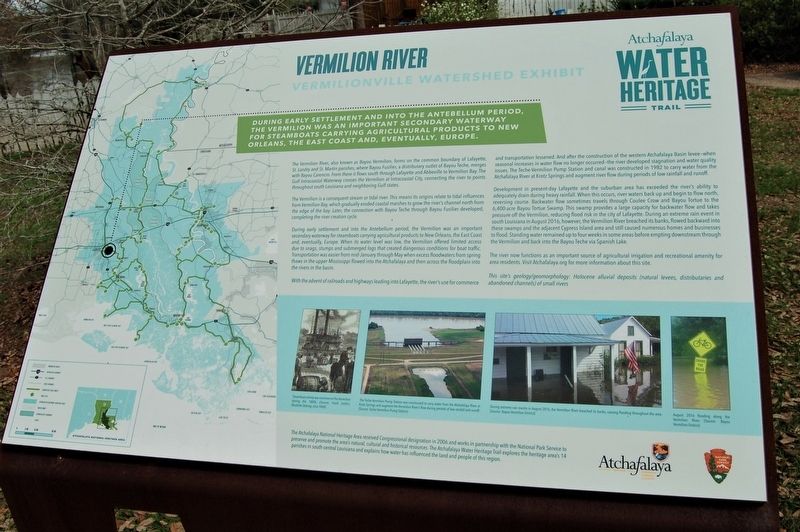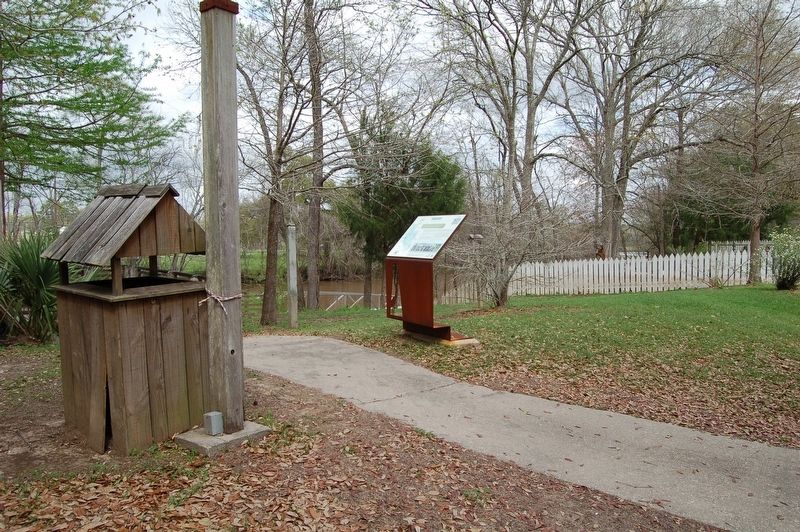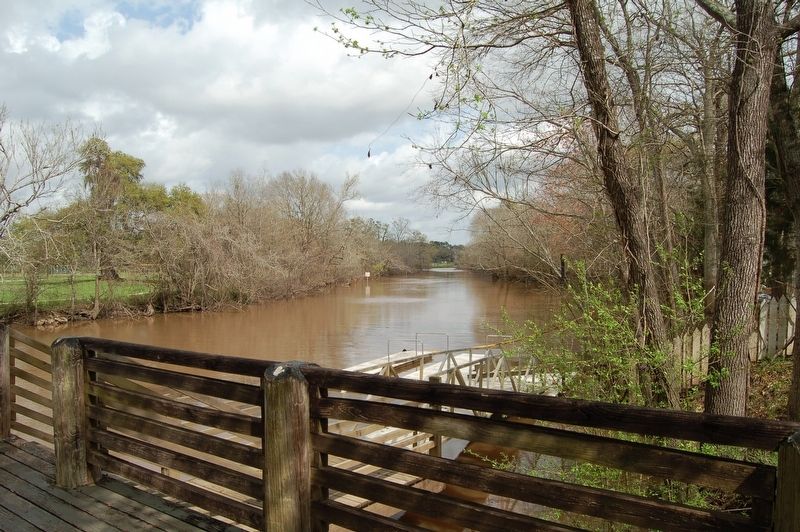Vermilion River
Vermilionville Watershed Exhibit
ó Atchafalaya Water Heritage Trail ó
During early settlement and into the Antebellum Period, the Vermilion was an important secondary waterway for steamboats carrying agricultural products to New Orleans, the east coast and, eventually the world.
The Vermilion River, also known as Bayou Vermilion, forms on the common boundary of Lafayette, St. Landry and St. Martin parishes, where Bayou Fusilier, a distributary outlet of Bayou Teche, merges with Bayou Carencro. From there it flows south through Lafayette and Abbeville to Vermilion Bay. The Gulf Intracoastal Waterway crosses the Vermilion at Intracoastal City, connecting the river to points throughout south Louisiana and neighboring Gulf states.
The Vermilion is a consequent stream or tidal river. This means its origins relate to tidal influences from Vermilion Bay, which gradually eroded coastal marshes to grow the riverís channel north from the edge of the bay. Later, the connection with Bayou Teche through Bayou Fusilier developed, completing the river creation cycle.
During early settlement and into the Antebellum period, the Vermilion was an important secondary waterway for steamboats carrying agricultural products to New Orleans, the East Coast and, eventually, Europe. When its water level was low, the Vermilion offered limited access due to snags, stumps and submerged logs that created dangerous
conditions for boat traffic. Transportation was easier from mid-January through May when excess floodwaters from spring thaws in the upper Mississippi flowed into the Atchafalaya and then across the floodplain into the rivers in the basin.With the advent of railroads and highways leading into Lafayette, the riverís use for commerce and transportation lessened. And after the construction of the western Atchafalaya Basin levee—when seasonal increases in water flow no longer occurred—the river developed stagnation and water quality issues. The Teche-Vermilion Pump Station and canal was constructed in 1982 to carry water from the Atchafalaya River at Krotz Springs and augment river flow during periods of low rainfall and runoff.
Development in present-day Lafayette and the suburban area has exceeded the riverís ability to adequately drain during heavy rainfall. When this occurs, river waters back up and begin to flow north, reversing course. Backwater flow sometimes travels through Coulee Crow and Bayou Tortue to the 6,400-acre Bayou Tortue Swamp. This swamp provides a large capacity for backwater flow and takes pressure off the Vermilion, reducing flood risk in the city of Lafayette. During an extreme rain event in south Louisiana in August 2016, however, the Vermilion River breached its banks, flowed backward into these swamps and the adjacent Cypress Island
area and still caused numerous homes and businesses to flood. Standing water remained up to four weeks in some areas before empting downstream through the Vermilion and back into the Bayou Teche via Spanish Lake.The river now functions as an important source of agricultural irrigation and recreational amenity for area residents.
Visit Atchafalaya.org for more information about this site.
This siteís geology/geomorphology: Holocene alluvial deposits (natural levees, distributaries and abandoned channels) of small rivers.
Erected by State of Louisiana and National Park Service.
Topics and series. This historical marker is listed in these topic lists: Environment • Waterways & Vessels. In addition, it is included in the Atchafalaya Water Heritage Trail series list.
Location. 30° 12.883′ N, 91° 59.81′ W. Marker is in Lafayette, Louisiana, in Lafayette Parish. Marker is on Fisher Road near Surrey Street (State Highway 728-B), on the right when traveling north. Located at the Vermilionville Historic Village. Touch for map. Marker is at or near this postal address: 300 Fisher Road, Lafayette LA 70508, United States of America. Touch for directions.
Other nearby markers. At least 8 other markers are within walking distance of this marker. Coussan House (about 300 feet away, measured in a direct line); Vermilionville Historical Timeline (about 400 feet
Also see . . . Vermilionville Historic Village. (Submitted on March 5, 2018, by Cajun Scrambler of Assumption, Louisiana.)
Credits. This page was last revised on May 28, 2023. It was originally submitted on March 5, 2018, by Cajun Scrambler of Assumption, Louisiana. This page has been viewed 408 times since then and 29 times this year. Photos: 1, 2, 3. submitted on March 5, 2018.


